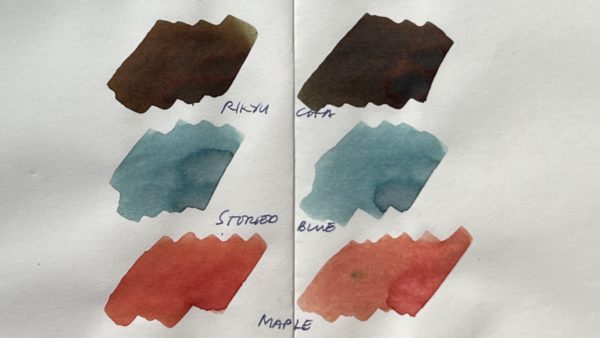Ah, music nibs. They transform lists to lyrics, to-dos to haikus. Or so I would like to believe, even if music nibs on paper are indistinguishable from stubs and cursive italics. In form, they are quite distinct from other nibs, as they have two slits, resulting in three tines rather than the usual two. They were designed for quick music notation, capable of making hairlines for bars and staves, and wider lines for notes.
I have six pens with music nibs, three vintage and three modern.
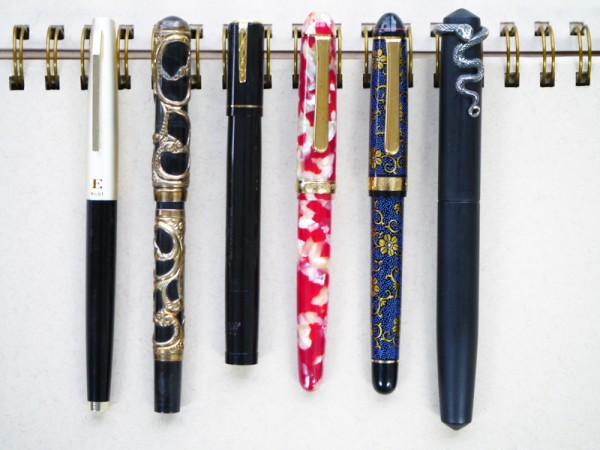
The Pilot E from the seventies has a fingernail music nib. It’s the only one I’ve seen designed like this.
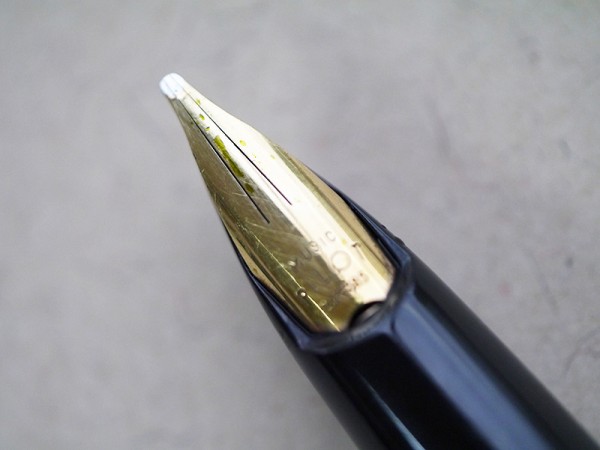
The tipping is thin. The effect is closer to an italic rather than a stub.

The no name overlay pen has a warranted music nib that flexes like there’s no tomorrow.
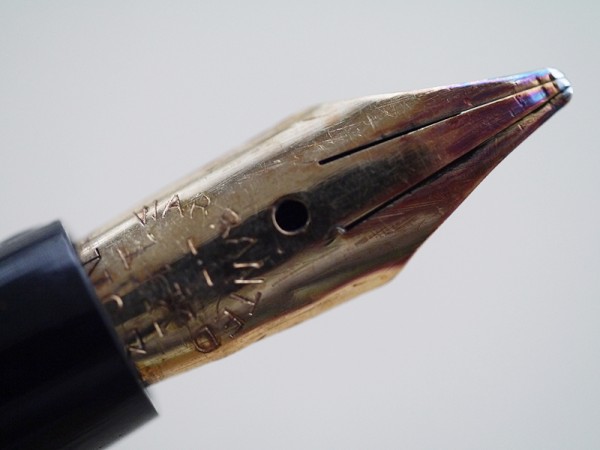
Warranted nibs were the generics of their time, and could go into any pen. They were warranted, or guaranteed, to be gold as stamped on the front. I love how this nib looks like it’s been run over by a carriage. Someone must have used it a lot; the tipping is worn down.
I found this vintage Waterman music nib on eBay – just the nib. Tom popped it into a Waterman safety. This is one of my favorite pens.
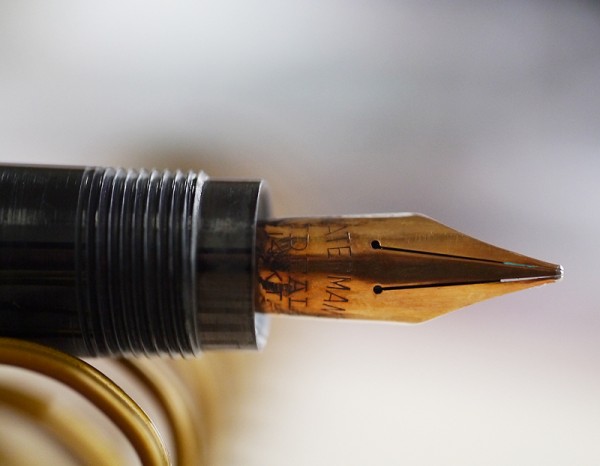
One of the signs of a nib with good flow is that slight space between the tines that allows capillary action to work its magic. Of course that space must disappear at the tip: the nib needs to “close.” In this close-up you can see both both slits with just the right space. I usually check tine spacing by holding the nib up against the light and squinting until my eyes hurt.
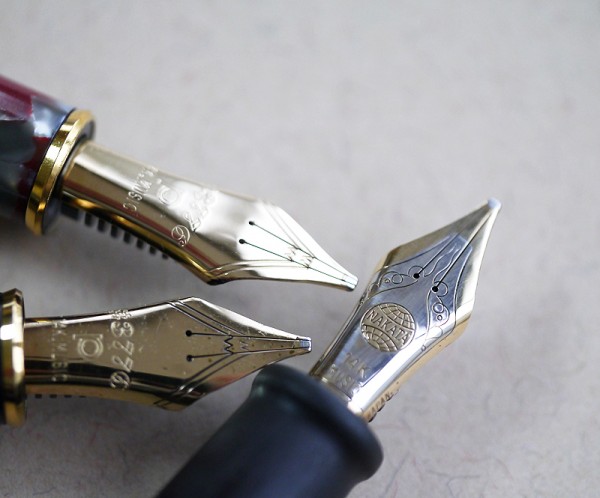
There is a tiny difference in the way the Platinum and the Nakaya music nibs write, even if they come from the same maker.
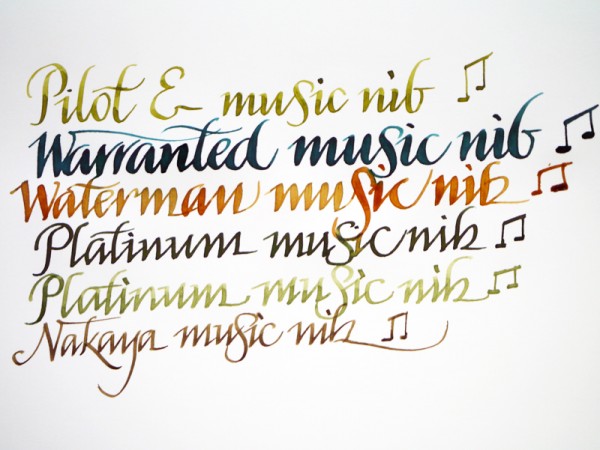
I can’t carry a tune, so these nibs will have to do the job for me.


